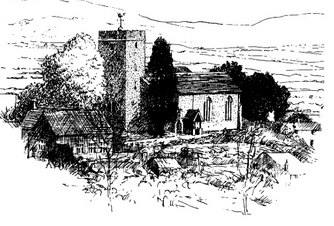Brilliana Harley
Lady of Letters and Civil War Heroine
What's in A Name?
Brilliana was born in Brielle in Holland, or Brill as it's known in English, where her father, Sir Edward Conway, was Lt. Governor of the Netherlands and she was named after that place.
She was well educated, knowing French and Latin. She was modest, self-effacing, pious and with a strong sense of duty, but was, as most women of her class, destined to fulfil a domestic role as wife and mother.
That isn't quite how things worked out...
The Harley Connection
Brilliana married Sir Robert Harley of Brampton Bryan in 1623. She was his third wife. Harley was acting as an aide to Sir Edward Conway who was by that time a Secretary of State.
In religion, like Brilliana, he was a devout Puritan.
By 1640, Harley was a member of parliament himself and, displaying his Puritan credentials was chair of the Committee for the Demolition of Monuments of Superstition and Idolatry!
A Lady of Letters
Brilliana was a letter-writer.
About 400 letters that she wrote to her husband and to her eldest son, Ned have survived. They are a treasure trove for researchers and are the main reason so much is known of her.
Sadly no replies to her letters have survived. Perhaps she destroyed them all as she read them, to prevent them falling into enemy hands. But who’s to say that some will not turn up in some dusty archive one day …
Civil War and Siege
When civil war broke out between parliament and the king, the Harleys sided with Parliament in a predominantly Royalist Herefordshire.
In a letter to her son in December 1642, Brilliana wrote; "They [my neighbours] are in mighty violence against me."
On 26 July 1643 events came to a head and Sir William Vavasour, the newly appointed governor of Hereford, surrounded Brampton Bryan with a force of about 700 soldiers.
Brilliana and three of her children together with about 50 civilians and 50 soldiers held the castle. Conditions inside rapidly deteriorated. Cattle, sheep and horses were plundered, all the buildings in the village were burnt to the ground and the castle was attacked with cannon.
Behind the castle's stout walls the defenders suffered few casualties, but the attackers fared less well and nearly a tenth of the company were either killed or injured.
The siege was lifted on 9 September when the Royalists left to join the attack on Gloucester.
Death, Destruction and the Legacy of a Name
For some months afterward the first siege an uneasy truce prevailed (although this did not stop Brilliana dispatching 40 troops to raid a Royalist camp at Knighton in Wales).
However, the privations of the siege had their tragic effect. Brilliana was never very strong, and she became weaker. In October of 1643 she died of an illness described as ‘a great cold, an apoplexy and defluxion of the lungs.’
Following her death, a second siege of the castle commenced in the spring of the following year. The Royalists reinforced by more powerful artillery reduced the castle in just three weeks leaving the building mostly a ruin.
But Brilliana's name lives on. Since her time it has become a tradition for Harley daughters to have Brilliana as one of their names.
